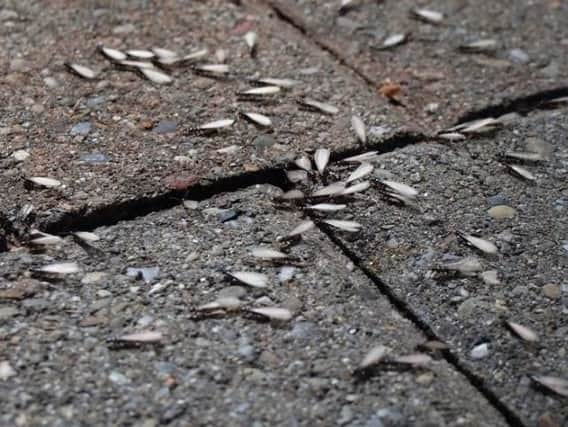Yorkshire warned that 'flying ant day' could come early in 2018 - and they'll be bigger than ever


Every year, male and female and ants will sprout their wings and venture out of their nests on what is dubbed 'flying ant day'
The queen ants mate with male ants, then drop to the ground and begin a new colony.
Advertisement
Hide AdAdvertisement
Hide AdSo each flying ant you see in the wild is potentially an entire new colony.


Queens can live for more than 10 years and spend most of their lives in their nest. But new queens will leave to mate and found a colony of their own.
But experts have warned that the event is going to hit the UK earlier than usual. And worse, it could be the biggest ever invasion of the flying pests.
Advertisement
Hide AdAdvertisement
Hide AdThis is down to the unseasonably warm weather in the UK this spring with temperatures reaching 29C in some parts of the country. That means mating could actually arrive this month instead of its expected date in July.
Pest controllers at Rentokill have warned that this year's ant population could be as high as 200bn; 50bn higher than usual.
A spokesman for Rentokil said: "There has been a significant increase in ant activity across the UK. "Experts believe the rise could be attributed to the unseasonably warm start to the Spring - after Brits experienced record-breaking warm weather in April.
"Last month’s period of clear skies and the hottest April day since 1949 may explain the surge in activity, as ants are typically more active in higher temperatures and colonies use sunlight to navigate. "If the weather remains mild, Rentokil expects higher levels of ant activity throughout the summer period."
Advertisement
Hide AdAdvertisement
Hide AdAlthough dubbed flying ant day, the phenomenon can last for as long as two weeks. David Cross, head of the technical training academy at Rentokil Pest Control, said: "Last month we saw reported ant infestations rise to levels we wouldn’t usually expect until June or July.
"It’s rare to see ant infestations in cold or overcast weather, and while the ‘Beast from the East’ may have caused them to remain dormant in March, the sudden change in temperature has since brought them out in their droves.
"This trend could be set to continue throughout the rest of the summer."